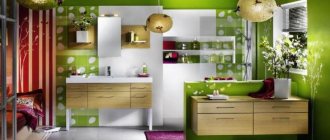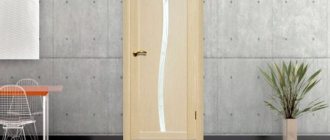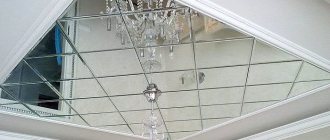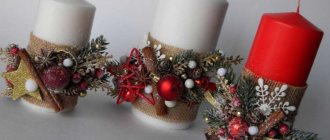Collecting and decorating a herbarium with your own hands
How to make a herbarium with your own hands? You should study the sequence of actions and follow it exactly. The herbarization algorithm was developed by Carl Linnaeus back in the 18th century. Since then, the rules for collection, drying and storage have not changed.
Bouquet of dried flowers
Dried flowers in the interior
How to make a herbarium with your own hands for school: application of autumn leaves
To make a herbarium for school, you need to use your imagination and think about what kind of picture or craft you want to depict. The easiest way is to collect the leaves of trees, which acquire a variety of colors in the fall, dry them, and then arrange them on the leaf in the form of an interesting composition and glue them with glue.
From the leaves you can easily form various animals, figures and other elements.
Thus, you can make all kinds of applications.
How to properly collect plants for a herbarium?
You should clarify which plant species in your geographic region have rare and protected status. You should not collect a herbarium for personal use from protected specimens.
It is better to collect plants in dry weather. To sort by morphological characteristics, specimens are dug up along with the roots. Samples are selected that are healthy and intact. Roots and stems that are too thick and inconvenient for drying are cut lengthwise.
Shoots with buds and greenery are cut from bushes and trees. If the plant had to be dug up, it is cleared of soil residues.
Herbarium in the living room interior
Herbarium in the living room
How to properly dry collected samples?
To dry plants correctly, a special device called a herbarium press is used. It consists of two planks, along the edges of which there are holes for strands. Prepared samples are placed in large quantities between planks, which are tied together with ropes. One herbarium press holds about 50 specimen inserts. The result is something like a thick, bound book. The insert sheet (also called a shirt), in which the plant is embedded, along with the label, is placed in a press, lined with sheets of paper on both sides.
Plants that are too juicy are dried after scalding them with boiling water. During the day, the herbarium press is taken out to dry in the sun. At night they are returned to the room. It is recommended to replace the sheets that line the plant inserts with dry ones at least once a day. How can you tell if a plant is already dry? Leaves and flowers should be fragile in appearance and not sag in an upright position.
To obtain a herbarium of mosses or lichens, the sample is dried in the open air in a cardboard box.
Decor from dry leaves for Halloween
Paintings from the herbarium in the interior
What is a herbarium
The name of the herbarium comes from the Latin word herba - “grass”. It is a collection of dried plants listed in a special catalog. Italian botanist Luca Ghini became the first person to collect a herbarium using paper. This material is very hygroscopic and allows long-term storage of the collected material.
Nowadays, more than 10 thousand botanists working in 168 countries around the world are engaged in collecting and preparing herbariums. The largest collections of plants are kept in scientific institutes of the USA, France, Russia, and Switzerland. Moreover, modern techniques make it possible to store information not only in the old way - at the moment there are so-called digital herbariums. They are scanned photographs of herbarium sheets with complete information about the specimen. If you can see the largest collections only by visiting a museum or scientific institute, then electronic catalogs are available online.
Related article: Monkey made of nylon: step-by-step instructions with photos and videos
Anyone can assemble a herbarium at home, because for these purposes special paper, glue, presses for drying samples, and folders for storing them are now on sale. But to create a collection it is not at all necessary to use these materials; it is enough to show a little resourcefulness and use what is at hand. You can see design ideas in the photo:
Herbarium design
According to the herbarization rules, the folder is placed on a horizontal surface, then the plant is placed in it, trying to preserve its natural shape. Excess leaves that interfere with planting can be carefully removed, but the petioles should remain in place of the removed leaves. A certain number of leaves and flowers are turned with the bottom side towards the observer.
The dried herbarium is prepared in a special cardboard folder. On one page you can place several plants of different shapes and sizes.
Lavender in the interior
Herbarium of leaves in the interior
Herbarium on one sheet
Most often this option is used for kindergarten. The children place dried samples of plants (for example, growing in a park) on one album sheet, and adults sign them.
This design of a herbarium made from leaves is also quite often used as a decorative element. The photo below clearly demonstrates what the decoration looks like in the interior of the room. The sample sheet should be placed in a beautiful frame under glass. Plants can be selected at your discretion. There are no restrictions here. The main thing is that they create a harmonious composition.
Some designers take several large leaves of the same plant, but in different colors (green, starting to turn yellow, completely yellow). Place each in a separate frame. From these elements the composition “Seasons” or “Mood” is created. Maple leaves are great for this purpose, as they have a beautiful shape. But you can take other plants.
Involving children
Children will certainly be interested in what you do with herbs and flowers. Doing a herbarium will help your child learn more about the types of plants that he sees during walks.
Kids will have fun decorating dried flowers using coloring paper. Grasses with small veins and details are suitable. To prevent thin ink paper from becoming wrinkled, it is placed on thick cardboard. The child places the dried leaf on dyeing paper, covers it with glass and takes it out into the sun. After a few minutes, the emerging imprint of the plant will become clearly visible on the blue leaf.
You can invite your child to make an unusual herbarium: an imprint of a plant on salt dough or modeling clay.
Wild onion herbarium
Autumn leaves decor
Leaves panel
Unusual option
Sometimes the interesting task of compiling a collection of plants begins to be given to children much earlier. To make it interesting for your child to look at the herbarium for kindergarten, we suggest you decorate it using a very interesting technique - casts.
A cast of the sheet can be made on salt dough or plaster. In the first case, the dough is kneaded according to the basic recipe: mix fine salt and flour in equal proportions, carefully add water until a plastic mass is obtained.
Related article: Master class on colors (paper plastic) for children with diagrams and videos
Roll out small dough medallions. Press the leaves into them using a rolling pin with the side with the veins. Dry the dough, then remove the leaf and paint the surface of the print.
The second version of the cast is made of plaster. This technique is not that difficult, but the result will be a beautiful and durable picture. To make it, you will need:
- plastic bag;
- plastic plate;
- plasticine (can be old);
- gypsum, water;
- collected leaves;
- dye.
The process is very simple, the photo instructions will allow you to see it in detail.
Please note that the print should be positioned with the design facing you.
Pour in and leave until completely dry.
We take out the plasticine.
We paint and varnish.
Such a panel will take its rightful place in the interior and will become the real pride of the baby.
Compositions of dried flowers in the interior
A beautiful herbarium on the wall in a frame or vase can completely transform your home. The herbarium will fit into any interior. The room in the style of strict minimalism will be decorated with paintings of “experimental samples” taken from the botanical collection.
On the walls of the children's room, the child will be delighted with paintings in wooden frames with children's appliqués. Dry compositions made from spices or ears of corn are suitable for the kitchen. You can place dried gifts of autumn in the living room. Delicate bouquets of green ears in decorative vases, romantic and sensual flowers under glass will complement the bedroom interior.
DIY lamps are covered with paper with a painted herbarium. Dried flower arrangements in glass bowls and candlesticks are interesting.
Ceiling decor with dried flowers
Pressing plants for herbarium
DIY herbarium in glass
A herbarium is not only a home botanical reference book, which is stored in special herbarium sheets or between the pages of books. It has long and firmly integrated into interior decor in the form of paintings and panels. Now it is almost a separate direction in art. Herbarium herbs look great on the wall in a frame, adding personality to the interior. Therefore, today we will tell you how to make such an elegant craft with your own hands - a dry panel from herbarium herbs.
taxi and photo
Is it possible to catch summer by the tail? Our author, decorator and jack of all trades Tina Khabarova is sure that it is possible! Only memories remain of the calendar summer, but you can still walk in the parks, collect yellow and red leaves and make a beautiful herbarium.
Indoor monstera leaves, fragrant eucalyptus from a loved one’s bouquet, white lilies and peony roses - flowers and plants that grow at home or are sold in flower shops can also be dried and used for a herbarium. And here are a few secrets on how to properly dry plants.
If you want to collect leaves and flowers in parks, then follow these rules:
Having collected flowers on a walk, hurry to immediately place them in a book or under pressure before the delicate petals curl up. Since this is not always possible, I came up with the idea of taking a thick book with a beautiful cover with me on a walk with my daughter. Inside the book I placed many sheets of plain white paper, folded in half.
Arrange the flowers in the book carefully and straighten each petal: their appearance depends on this. Paper is needed so that the flowers do not spoil the book with the juice released during drying under a press, and the ink does not print on the flowers (and vice versa). If the plants are large and dense, it is better to lay several leaves. And it’s very important to find a comfortable elastic band and put it on top of the book to create a press effect and not lose all the treasures on the way home.
Herbarium of leaves
A leaf herbarium is obtained by drying shoots with leaves in the open air. When the deciduous herbarium has dried well, it can be covered with glass and framed. The paper on which the foliage herbarium is pasted should be of medium density.
Dry leaves under glass
Herbarium in the dining room
Using an iron
This electrical device is also often used to create a herbarium from leaves. Children will not be able to dry the samples with an iron with their own hands. Therefore, their parents should help them. You need to do the following:
- Lay out newspapers on the table. You cannot put a blanket under them, as the surface must be hard.
- Place a paper towel on the newspaper. You can also use a napkin.
- Place a plant leaf on a towel, straightening out all its parts. Cover it with a napkin and iron it with an iron. You need to keep the device on the sample for approximately 15 seconds. After this, you should replace the napkin and repeat the procedure.
If you use an iron, you need to make sure there is no water in it.
Herbarium of flowers
A herbarium of flowers is dried in the open air. A neatly formed bundle is tied with thread or wire, hung or placed in a dry low vase. Wheat spikelets and poppy heads are formed in a vertical position.
Herbarium in Provence interior
Creation of a herbarium
Floral arrangers know how to make a flower herbarium using a set of simple tools. Before starting to compose a flower arrangement, a novice florist-arranger will need:
- a light porous base on which the composition will be formed (floral sponge, wet sand, placed in a plastic bag and tucked into a vessel);
- metal pins for attaching dried flowers to the base;
- bamboo or straw twigs of various lengths for stability of the composition;
- brown or green colored paper;
- transparent adhesive tape;
- glue, scissors.
When composing a composition, you should remember about color combinations: dried flowers in one bouquet should not contrast too much. It is better to choose colors that are muted rather than bright. Accessories such as ribbons, bows and lacing should not distract attention. Arrangements of dried flowers should be fastened and decorated with cotton or linen ribbons.
Dried flowers in the interior
Wreath of dry leaves
Sometimes dry compositions are placed in openwork bouquets. The shape and size of the vase or bouquet holder are selected based on the dimensions of the composition. Decorative vases made of clay and wood are suitable for dry bouquets.
Herbarium on the mirror











